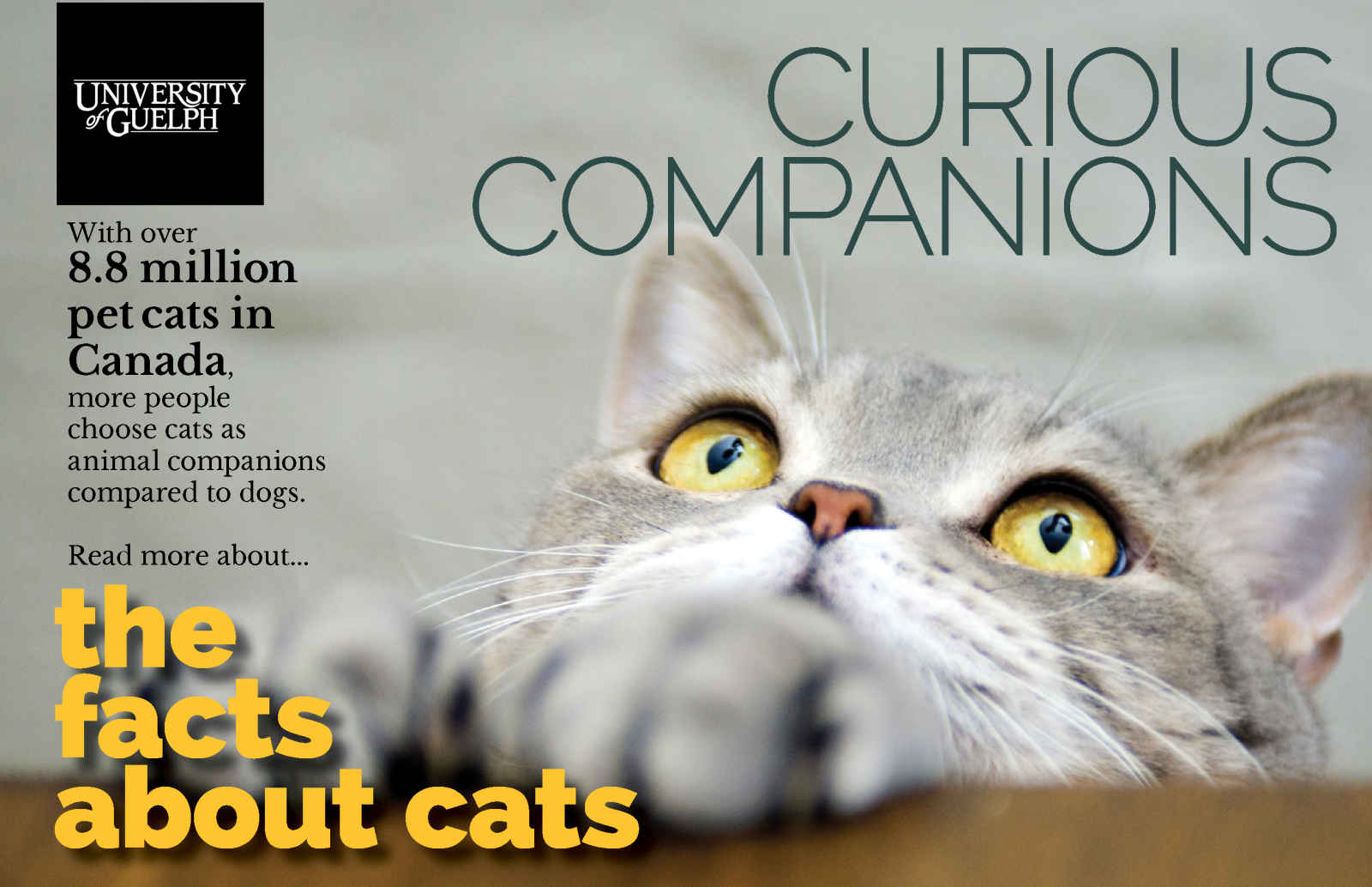
Cats are mysterious creatures and their behaviour is intricate. Researchers at the University of Guelph’s Ontario Veterinary College (OVC) are studying various areas of cat behaviour, aiming to improve our feline friends’ health and well-being.
Carly Moody, a PhD candidate in professor Lee Niel’s Companion Animal Behaviour and Welfare Lab, is investigating new methods to improve the experience of cats during veterinary visits. Carly says stress is a major reason why cat owners are less likely to bring their cats to the veterinarian.
In recent research findings, Carly identified a number of indicators of stress and fear in cats, including having their ears back, dilated pupils and increased respiratory rate. Cats can be unpredictable and most people find it hard to recognize the signs of fear and stress, she explains. Carly is now focusing on identifying the commonly used handling techniques that can help minimize stress in cats.
“Understanding the signs of stress coupled with proper handling techniques can help veterinary teams create a better overall experience for their cat patients.” Carly says.
Some traditional and commonly used handling techniques include full body restraint, scruffing (holding the loose skin at the back of the cat’s neck), applying a muzzle to the face and towel wraps. “Recent results suggest minimal restraint techniques are most effective,” Carly explains.
“There is a misconception that a heavier restraint is safer, but it can actually be much more dangerous. When you use harsh restraint on a cat, fear and the potential for aggressive behaviour are increased; cats will remember that experience and may be more fearful and aggressive the next time they come to the veterinarian.”
Carly hopes her research will lead to improved recommendations for feline handling techniques for veterinary teams, decreasing stress and enhancing feline welfare. “If we can ease the stress cats feel while at a veterinary hospital, perhaps cat owners will be more inclined to bring their cats to the vet more often. Regular visits will increase opportunities to develop preventive care plans and allow for earlier detection of illness or disease.”
As a cat owner, there are things you can do at home to help make veterinary visits less stressful for your cat, such as allowing your cat to get used to its carrier by leaving it in an area where it is active and placing a comfortable blanket and treats inside.
“Cats will be more likely to develop a positive association with their carrier if given the opportunity to familiarize themselves with it in a safe and calm environment,” Carly says. “Some owners may also choose a feline-friendly clinic, or opt for hospitals that offer cat-only waiting areas and cat-friendly handling techniques during examinations and procedures.”
Carly emphasizes how important it is for cat owners to try to identify and interpret their cat’s behaviour, stressing that if an owner understands their cat’s regular routine they may be able to help detect potential health and welfare issues that can develop over time. “Cats mask their symptoms – they are very good at hiding signs of illness and pain. Improper handling during an examination, could lead to inadequate diagnosis or issues with treatment as something could potentially go unnoticed.”
Kitten socialization is also an important piece of the puzzle, which can help with decreasing stress during veterinarian visits through the kitten’s first year and into adulthood.
“From a young age dogs are always exploring new environments,” Carly says. “Cats often lack appropriate exposure to new people, smells, or sounds during important development phases.”
There are many ways owners can help safely socialize their kitten, such as: providing them with supervised opportunities to explore different environments outside the home, including car rides and visits to veterinary clinics; exposure to new and different types of people; interacting with other pets in a safe way; and frequent gentle handling, particularly their paws, as nail trims can be especially stressful for cats since they generally don’t like their paws being touched.
“Having a pet cat is a long-term commitment. In order to provide a cat with a good and healthy life, it is important to understand how to meet both their behavioural and environmental needs,” Carly says.
“The scientific community still has much more to learn about cats. We really don’t know enough about them, which means there is still a lot more we can discover when looking for ways to improve feline health and welfare.”
Read more in the fall issue of Best Friends Magazine.

